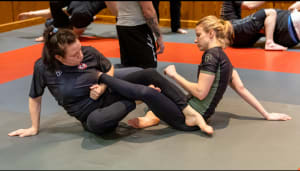
At Quest Jiu-Jitsu & Self-Defense, we believe how you drill is just as important as what you drill. A few years ago, I had the privilege of learning a game-changing drilling progression from Professor Roy Harris during a Roy Dean affiliate retreat. Since then, I’ve shared it with our students across all ranks, and it’s become a foundational part of how we train at our school. This method isn’t flashy, but it’s incredibly effective—it helps students develop smooth, efficient, and truly functional techniques they can rely on in live rolls and real-life self-defense. Here’s how it works: Start by getting the technical details as solid as possible. This is where you refine your angles, timing, weight distribution, grips, and posture. You’re not just going through the motions—you’re implementing the technique intentionally and thoughtfully. This is your blueprint. If something feels off, slow down and ask questions. Accuracy now pays dividends later. Once the individual steps are clean, it’s time to focus on connecting them. I like to call this “fighting in cursive.” Instead of moving in choppy, disconnected pieces, your goal is to keep the motion continuous—even if it’s slow. The pace isn’t what matters. What matters is that you’re always doing something. This continuity builds the momentum advantage: in a fight, the one who’s acting rather than reacting often has the upper hand. Now that the technique flows, look for parts you can combine. Can you frame and shrimp at the same time? Can you off-balance your partner as you grip, instead of after? Combining movements not only makes your technique faster and more efficient—it also cognitively overloads your opponent by forcing them to deal with multiple threats at once. They don’t get the luxury of reacting to one problem at a time. Every time you pick up a new detail, go back to step one. Assimilate the detail, rebuild your flow, and re-layer the complexity. This is how you avoid stagnation. Every rep becomes an opportunity to improve—not just reinforce muscle memory, but upgrade it. Finally, test it in live drilling and sparring. Try it on your training partners with control, but with intent. Feel where it breaks down. Feel where it holds up. Let the feedback guide your next round of refinement. Jiu-Jitsu is an art that’s forged in pressure, and your partners are your whetstones. Whether you're a brand-new white belt or a seasoned brown belt, this drilling process will sharpen your game over time. It encourages patience, focus, creativity, and ultimately helps you move with purpose—like you’re writing your jiu-jitsu in cursive, one continuous line at a time. If you're looking to deepen your practice or want to experience this method firsthand, come train with us. We’re here to help you build something beautiful, technical, and hard to stop.Fight in Cursive: The 5-Step Drilling Method We Use at Quest Jiu-Jitsu & Self-Defense
🥋 Step 1: Master the Details
🔗 Step 2: Smooth the Transitions
⏱️ Step 3: Combine Movements for Efficiency
🔄 Step 4: Rinse, Repeat, Refine
🤼 Step 5: Do It to Your Friends

